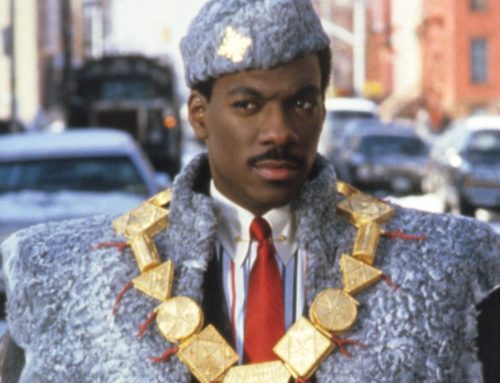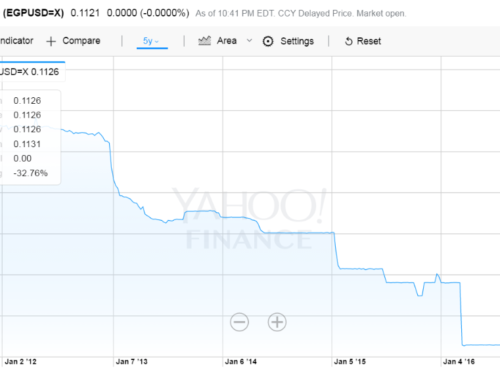[CROSSPOSTED IN FOREIGN POLICY MAGAZINE – TRANSITIONS]
In the second such incident this month, Tunisia’s hardline Salafis decided to scale buildings in order to, well, put up a flag. Seeing the cheers of joy and victory, few things seem to entertain them more, it appears.
This latest incident occurred last week, on March 25. Half a dozen men climbed the clock tower at the entrance of Avenue Bourguiba in Tunis — which was the flashpoint of the capital’s revolutionary protests last year — to hang, askew, a flag too small to be really visible from afar on the copper-colored ‘Big Ben.’ The Tunisian blogosphere quipped, for that matter, that the Salafis were attempting to turn the clock back a few centuries.

In case you were wondering (as I was), that flag, black with white inscriptions (or vice-versa), is widely referred to as the “Caliphate” flag. It carries the shahada — the declaration of faith, which states that “there is no god but God and Muhammad is his prophet.” Some trace the origins of the flag to the Prophet Muhammad himself; contemporary narrators have informed us that he carried a black banner, which he called “the eagle,” to battle, however it is not known if the shahada was inscribed on it. The white one is the ‘civilian’ banner, which flew over the city in times of peace.
While it would historically have represented an Islamic nation-state, the flag is today common to a number of Islamist movements, perhaps the most notorious being Hizb-ut-Tahrir. It is a wholeheartedly partisan flag and, for Muslims, has no spiritual significance — rather, it mostly looks like a photographic negative of the Saudi flag.
The more interesting flag-related incident, however, occurred three weeks ago, at Manouba University, which has for months been the scene of clashes between secular and salafi student groups.
 A large, bearded man in a black robe climbed the rooftop of the School of Humanities, pulled down the national Tunisian flag, and replaced it with the black and white flag. Though at a clear disadvantage, a female student, Khaoula Rachidi, climbed to the roof and tried to stop him. I imagine her voice was a little shaky, mixing Arabic and French as Tunisian young people do, as she chastised him for replacing the flag. The giant didn’t like what he heard: He pushed her to the ground.
A large, bearded man in a black robe climbed the rooftop of the School of Humanities, pulled down the national Tunisian flag, and replaced it with the black and white flag. Though at a clear disadvantage, a female student, Khaoula Rachidi, climbed to the roof and tried to stop him. I imagine her voice was a little shaky, mixing Arabic and French as Tunisian young people do, as she chastised him for replacing the flag. The giant didn’t like what he heard: He pushed her to the ground.
Emboldened, other students followed suit and climbed the roof. An altercation between the salafis and secular students ensued.
In a matter of hours, Tunisia had a new icon. “We are all Khaoula Rachidi,” wrote newspapers the next morning — as they reminded, almost tongue-in-cheek, that the Tunisian national flag that the religious hardliner removed carries a crescent and a five-branched star, representing the five pillars of Islam.
Two divergent discussions ensued. The first was the creation of a perfect media story; the courage of a young woman, presented as a David to the Salafi Goliath, the flag-bearing Marianne of a real-life Tunisian Delacroix painting. Even the President invited her to a flag-raising ceremony the following week.
The second, however, was about what it means to replace the national flag with a partisan one, and how that is symbolic of the relationship between Salafis and the Tunisian community: Whether the former see themselves as part of the latter or, conversely, see Tunisia simply as a province in a larger Islamic nation.
Some downplayed the incident. The Salafi community promptly condemned it, reasserting its patriotism and stressing that “the mistakes of one cannot be blamed on the whole movement.” Rashed El Ghannouchi, leader of the more moderate Ennahda party, said that “only a madman” would remove the flag. Many, however, condemned the act in the harshest terms with barely concealed disdain, casting doubt over the patriotism of the Salafi movement that chooses to raise a different flag over the national one.
Both events are quickly being forgotten, becoming sideshows on the long battle for the secular character of the Tunisian republic. The clock tower event is already an amusing topic of conversation, and Khaoula’s name nearly forgotten. All that remains is the shadow of a black and white flag, not big enough to obscure the spring sun of Tunis. At least, not yet.



